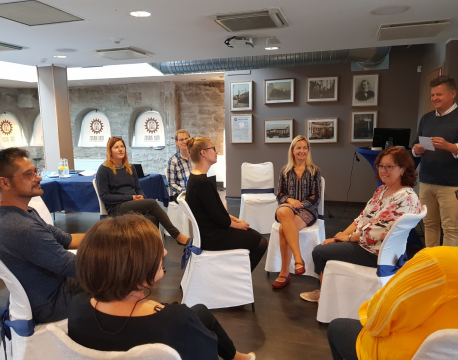New ways forward – a more cohesive Euroguidance Network

The Euroguidance Network has grown to a Europe-wide network of 37 countries. In the coming years, there will be more countries joining the network. Due to this expansion, the current member countries have started exploring how the network could be internally organized in such a way that a more effective coordination of joint activities and an improved mutual cooperation across the national Euroguidance Centres would be possible in the future. The aim is to have a more cohesive structure that allows the network to achieve its goals and objectives more efficiently and with greater agility.
The Euroguidance Network meeting held in Bradford (April 2018) concluded that a smaller group should be set up to prepare a proposal for the new network structure of coordination and cooperation. The work of this group was to be based on the initial guidelines jointly agreed upon in Bradford. Hence, Euroguidance representatives from ten different countries (CY, CZ, DE, EE, FI, IE, IS, NO, PL, PO) met in Tallinn in September to prepare a proposal for the new structure that will be debated – and hopefully approved of – at the network meeting in Reykjavik in October.
The discussions in Tallinn that were facilitated by an external expert resulted in an initial plan for organizing the network level activities so that better synergies within the network and greater impact on society can be created. In more concrete terms this means that a new body, so-called Steering Group, would be established and the joint network level work would be slightly rearranged so that the existing four working groups will be replaced by the three main tasks of the network:
- Support the development of the European dimension of lifelong guidance within national guidance systems through strategic cooperation with relevant national and EU authorities, services and networks, as well as through information sharing, peer learning and facilitating international exchange and cooperation in the area of lifelong guidance.
- Support competence development of guidance practitioners and raise their knowledge and awareness on the value of international mobility for career management and skills development. This is supported through training and other learning opportunities as well as strategic dissemination and communication approaches.
- Information provision and communication on: the European dimension of guidance.
The role of the Steering Group would be to facilitate internal communication across the network, coordinate network-level actions and represent the network in relation to external stakeholders at a European/international level on behalf of the network, when needed. The aim is to try out this new structure for a two-year period (2019-2020).


